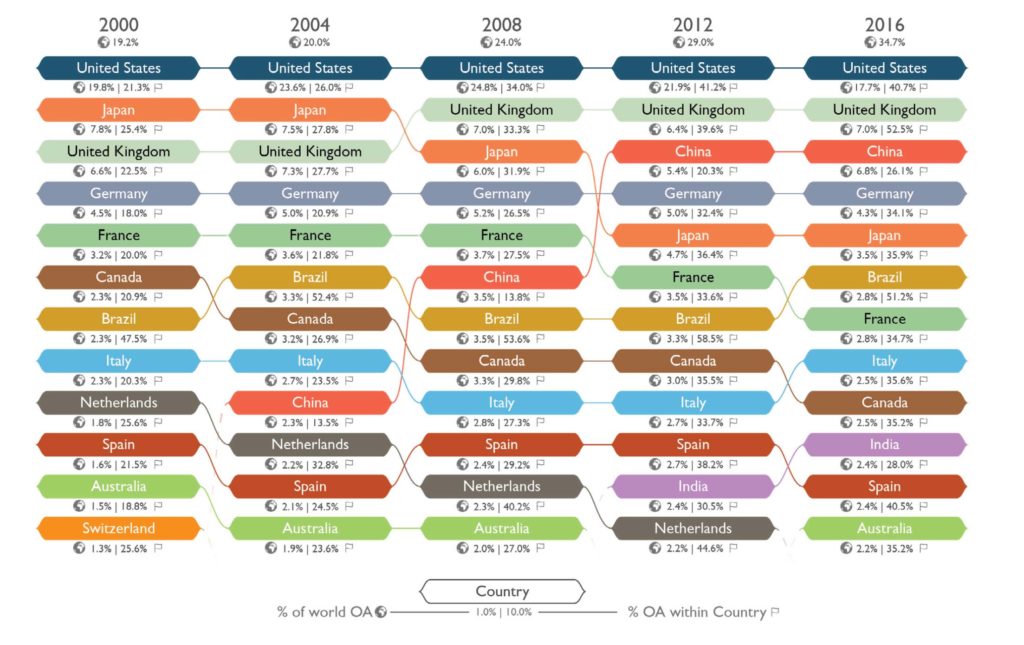
The future is open: evolution of scholarly research in the Information Age
“By encouraging science to be more connected to societal needs and by promoting equal opportunities for all (scientists, policymakers, and citizens), open science can be a true game changer in bridging the science, technology and innovation gaps between and within countries and fulfilling the human right to science.”
UNESCO (United Nations Educational, Scientific, and Cultural Organization)
In February 2021, F1000 held a webinar for NORDP (National Organization for Research Development Professionals) members entitled: ‘Open Science Trends: Opportunities for Research Development & Innovation’. This webinar featured Dr. Kimberly Eck, Dr. Robert Kruse, Dr. Brad Fenwick and Jamie Burns. Some key themes were identified in the webinar, which we’ll delve into in this post.
First, it’s important to understand the term ‘open science’ (an interchangeable term with ‘open research’) – the free availability of content, data and software. In today’s context, open science broadly means maximizing the dissemination of knowledge via research workflows and communication channels that are more transparent and collaborative than traditional methods, which can create economic and social obstacles and/or rely heavily on subscription-based publishing mechanisms.
The benefits of ‘open’
In the age of rapid globalization, scientific research depends more and more heavily on sharing and understanding not only of scientific results and conclusions, but also data, to open doors to further advances. For this reason, the open science movement is gaining momentum among research professionals for whom open science, and the ability to publish open access, increases the impact of their work and enhances opportunities to advance their careers.
- Open access increases usage, as it ensures that research output is accessible despite academic or economic barriers, and therefore more citable by the researchers who use it to improve their outcomes.
- With no paywall to hinder access, increased visibility facilitates collaboration and builds connections between researchers and institutions, even across disciplines.
- This enhanced dissemination of research may also result in increased article views, which are helpful for future grant applications and promotions.
- Sharing the entire research process, including data and methods used, further demonstrates the researcher’s capabilities and the calibre of his/her research.
Global adoption of open science
Whether the result of public policy or otherwise, funders are increasingly recognizing the inherent value of open science and mandating that the output of publicly funded research be made freely available for public consumption after publication. Some examples include:
- As of 2022, HHMI (Howard Hughes Medical Institute) will mandate that research funded from its grants be published open access.
- Since 2016, it has been a requirement that information from NIH-funded clinical trials be made publicly available.
- UNESCO’s 2021 draft Recommendation on open science aims to build a coherent global vision of open science and a shared set of overarching principles and shared values.
- Research funders signed up to Plan S include the WHO, the Bill & Melinda Gates Foundation, and the Wellcome Trust.
Largely in response to policy initiatives and demand from researchers themselves, open science usage has dramatically increased over the past few decades. Figures from 2016 show that the UK published over 52% of its research output open access. This has doubled since 2000 – a pattern seen across most of the world. The US also consistently leads contributions to global OA output, at nearly 18% of global OA output.

What does the future look like?
Many in the scientific community hope that the value of publishing in an individual journal will erode – it’s not where you publish, but what you publish that matters most. It’s the impact of the paper itself that should be the unit of recognition, and the metrics supporting that will become increasingly important. Usage and downloads are becoming the dominant criteria to measure a paper’s impact because these factors tend to reflect the public consumption of science.
In addition to making scholarly content widely available at no cost, publishers are increasingly offering open peer review, a standard model of the F1000 publishing platforms that creates openness and transparency of the peer review process to improve the quality of reviews and create additional attribution opportunities for reviewers. However, before open peer review becomes more widespread, the scientific community must overcome many of the current politics involved in being “on record” for criticizing someone else’s work.
Alongside all the opportunities offered by open science, this increased transparency offers the added benefit of funders being able to reach out and fund researchers directly. According to Dr. Brad Fenwick, there’s a growing trend of “we’re speeding up scientists,” with funding bodies speeding up their decision-making and distribution of resources to keep up. This would not be possible without the metrics and transparency available as a result of more open communication channels.
Ultimately, the tenets of open science suggest that a more open world enables collaboration with other researchers around the world who would otherwise have remained unknown. Open science offers a way forward with interdisciplinary collaboration, which institutions have struggled to value, reward or incentivize. The increased transparency of open science makes it possible to identify individual contributions to multi-disciplinary works..
How F1000 can help
F1000 fosters a culture of innovation to accelerate the reach of knowledge and put it in the hands of those who will shape the future. We partner with research organizations that want to do things differently, to empower researchers, advance knowledge and engage society. F1000 provides open research publishing solutions and services to organizations such as the European Commission, Wellcome, and the Bill & Melinda Gates Foundation, as well as directly to researchers through our F1000Research platform.
F1000Research is an open research publishing platform for scientists, scholars and clinicians that aims to achieve just that – the rapid and citable, openly available publication of articles and other research outputs without access restrictions or rejections based on editorial biases.
In addition to rapid, transparent publication for researchers on F1000Research.com, F1000 partners with funders and institutions worldwide, such as the Wellcome Trust, the Gates Foundation and the European Commission, to develop branded, end-to-end open research publishing solutions. These Platforms feature low-cost Article Processing Charges (APCs), a simple, one-page submission process and transparent post-publication peer review. F1000 also elevates the status and discovery of other research outputs, including data sets, posters, and related materials.
Aligning with the shift towards open science, an F1000 Platform maximizes the potential for research use and reuse by:
- Accelerating access, reach and impact
- Enabling reproducibility and reducing research waste (an important issue for funders)
- Supporting early career researchers, and allowing them to share their work easily
- Employing responsible, comprehensive article-based metrics
In addition to Platforms, F1000 also offers Gateways which are dedicated, branded research hubs on the F1000Research platform for institutions or other scientific communities to showcase their researchers’ publication output with rapid publication, transparent peer review and immediate discoverability through F1000Research.
“I was lucky to publish on the F1000R platform early on during the pandemic. Among the many reasons I chose it was the fact that it would be the fastest way to get online and share my research. With the traditional process, it’s online maybe 8 or even 12 months later, which is not feasible for researchers and their careers, and certainly not feasible in a pandemic setting.
With F1000 it’s much faster. You put your paper up and you can actually read the peer review as it happens on the website and respond and update your manuscript live. Once it’s accepted it’s automatically uploaded onto PubMed.”
Robert Kruse
Find out how you too can launch a Platform or Gateway with F1000 to grow your brand presence and strengthen your value proposition for researchers and the public. To learn more about adopting open science email us at: partnerships@f1000.com.
With all this in mind, we can see that open science is a potential game changer, enabling researchers and institutions to distinguish themselves and their research to funders. The most important factor in accelerating this shift towards open science is talking about it and bringing these conversations back to our institutions. Research development professionals are ideally positioned to highlight the benefits for institutions and society as a whole, but we can all do our part to keep the conversation going.
